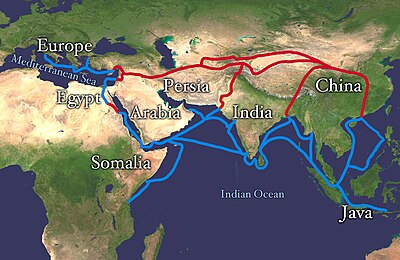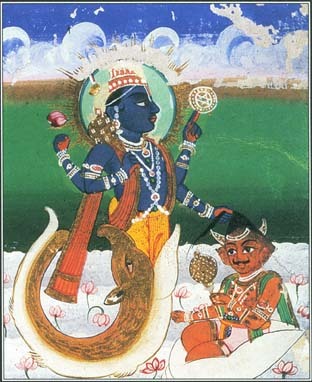First off, this is some music of ancient India I found for reading a blog and listening enjoyment. Enjoy!
Are you feeling kind of awesome, listening to it? If yes, yes! Yesterday, I got the incredible opportunity to sit down with Gurcharan Singh Gill, who received his PhD in Mathematics from the University of Utah in 1965 and then went on to teach math at BYU for forty years. Brother Gill is Punjabi by ancestry, converted to the church, and has been active in collecting his family history and ancestry since his retirement. This is his website, which has articles about the Origins of Indian races. He is also, coincidentally, my brother's girlfriend's grandfather, and I wish I could put up the conversation we had because he is so cool.
Brother Gill has a wealth of knowledge about the Indus River valley civilizations and it was amazing to hear him explain their history. I got to ask questions to clarify what I was confused about, and learned about the connection between historical problems controlling the northwest frontier of Pakistan, which is high in the mountains, with narrow roads, and caves to hide in, and the success of Al-Qaeda.
 |
| The Caspian Sea |
 |
| The Silks Roads traveled by the Aryans |
He explained that the ancestors of the Aryans, the Scythians, lived just under the Caspian Sea, and that the Aryans, their descendants, were nomads and traders all along the Silk Roads. Some groups of Aryans, headed through the Mediterranean Sea and later became the Vikings.
 |
| A smiling German :) |
The group of Aryans we're focusing on came through modern-day Afghanistan and the Khyber Pass, but you can see the connection between these groups looking at their languages - Sanskrit, German, and Latin make up part of the Indo-European languages, which share vocabulary and some structure. Brother Gill called the Indus Valley the "hotspot," with so many different groups vying for land there. He had a lot more to say about the Indus Valley civilizations, as you can see reading his articles .
 |
| The Khyber Pass |
The Aryans settled on the Indus River, and later the Ganges, taking over the land of the Dravidians, like the pilgrims and the Native Americans in America, and pushing them down into the southern part of India. The Aryans kept their genealogy by memory and, although they had no written alphabet, they had signs for counting: a line to represent five, five lines for 25, and so on.
 |
| A map of India divided into tribes |
900 years after their arrival, they wrote down a version of Sanskrit, so the Veda and other historical and scriptural texts are what they could remember of an oral tradition. The simplified version of Sanskrit, Hindi, is spoken by 85% of the Indian population, but the Brahmins, the clergy class, still use Sanskrit for religious rituals.
When the Brahmins, the highest on the caste system, divided India up into different tribes, each Brahmin took responsibility for a certain tribe or village. This is how they recorded their genealogy, and the Brahmin of the villages still remember it. Brother Gill was recently able to trace his family back to 2300BC by traveling to India and asking his village's Brahmin. For hundreds of years this information must have been transmitted orally from brahmin to brahmin (a responsibility passed down through a family line) for EVERY member of the village! How cool is that!
 |
| Brahmin |
Manu (pronounced MAH-new), whose family was the only one saved in a great flood in 2300BC, is actually Brother Gill's ancestor. This story shows how much can be forgotten in an oral language and how cool it is that a person with the sole responsibility of remembering his tribes' ancestors could connect Brother Gill's line back to this guy! This website compares many different civilization's stories of the occurrence of a great flood, like that of Noah's.
Manu is a man we would consider Noah, who was saved from a flood of the Indus River with his twelve children, including Brother Gill's ancestors, Ikswaku (the oldest son), and Ella (Manu's daughter). As Brother Gill tells it -
"The essence of the extract from the Agni Pooran is this: ‘When ocean quitted his bounds and
caused universal destruction by Brimha’s command, Vaivaswata (Son of the sun) Menu (Noah), who
dwelt near the Himaleh (The snowy Caucasus) mountains, was giving water to the gods in the Kritmala
river, when a small fish fell into his hand. A voice commanded him to preserve it. The fish expanded to
an enormous size. Menu, with his sons and their wives, and the sages, with the seed of every living
thing, entered into a vessel which was fastened to a horn on the head of the fish, and thus they were
preserved."
 |
| The fish telling Manu of the flood |
Although the Aryans got to India from Central Asia at around 1500BC and this event happened 800 years earlier, the Aryans believe this record proves they are natives of the Indus River valley, not migrants, and that their common ancestor was the first of the human race, like Adam. This is the "Aryan problem," Brother Gill explains, because the story does not match up with what scientists know of Aryan ancestry. It may not be what scientists consider historically accurate, but this myth that still shapes their culture and history today. |

Wow, that's incredible how the Indians kept their genealogy alive through oral transmission. Even with modern Family History technology, we still struggle to even know about our great-grandparents.
ReplyDeleteI also found it interesting how when civilizations start to develop a written language, it usually starts with a religious text. Europe: Gutenberg Bible; Islam: Quran; Indians: Sanskrit and so forth.
This reminds me of a guy at church bearing his testimony one day, saying that he saw a documentary trying to prove Noah's Ark was real, but by then end found no evidence and therefore disproved its existence. He said the documentary had no affect on his testimony, as it had grown to the point where it was "virtually unshakable". He said he did not base his testimony on evidence or facts, but rather on confirmation through the spirit.
ReplyDeleteIt is probably similar in this case, the oral traditions and beliefs of these people are just as strong and they will continue to hold them despite contradictory scientific evidence or whatever else may oppose them. And it's not only their culture, but every culture that holds dear its traditions. Even if they have to adapt them to conform to changing times, it seems almost impossible to completely rid a society of its traditions and beliefs.
Yea, I mean, imagine just having in your heads every generation for each person in your village, Andrew. I wonder if there were some people who didn't get the honor of having their family remembered, or if it was a pretty democratic thing.
ReplyDeleteDane, I think you're right. It also reminds me of a story I heard from my mom that there was a member of the Church who was reading about horses, maybe in 1 Nephi 18:25, and I think she left the church because she had recently learned that there were no horses in America until the time of the Europeans (?). I don't know; the memory's not great; but later scientists discovered that there actually were horses in America at that time. Interesting stuff. I think, in the end, the scientific history and religious history will probably line up, but not until the end.